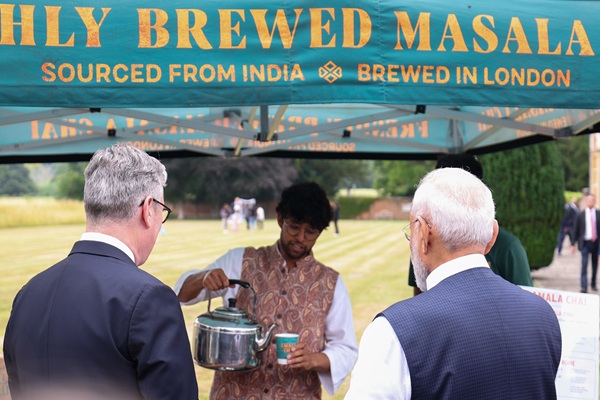.png)
India’s UK Agriculture Win Faces Its Real Test Beyond the Customs Gate
The recent trade deal offers fertile ground for India’s farm exports to thrive in the UK, provided standards and traceability take root.


Chandrashekhar is an economist, journalist and policy commentator renowned for his expertise in agriculture, commodity markets and economic policy.
August 16, 2025 at 9:36 AM IST
India’s new trade pact with the United Kingdom is not just historic, but significant in its potential to open up market opportunities for a range of Indian goods.
Indian negotiators have done a great job in striking a favourable deal. The UK will allow duty-free entry of a wide range of Indian goods with protections firmly in place for domestic producers. In agriculture, it means India will not be overrun with British imports. The real question is whether we can clear the hurdles that come after the tariff gates swing open.
At first glance, the numbers look encouraging. Goods exports to the UK have risen from $11 billion in 2022-23 to $15 billion this year, while British imports into India hover under $9 billion. Agriculture is a small slice, about $1 billion worth of rice, spices, seafood, fruits, vegetables, and processed foods. But the UK’s wealthy consumers are willing to pay for quality. There’s room for premium Indian products to find a loyal market.
But that market doesn’t open up just because tariffs fall. It’s guarded by a dense thicket of sanitary and phyto-sanitary regulations imposed by the UK that decide what passes through customs and what gets turned back. These rules aren’t trivial paperwork. They’re about food safety, plant and animal health, and increasingly about how food is grown and transported. They set limits on pesticide residue, ban certain fumigants—methyl bromide, still used in India, is a no-go in most developed countries—and demand traceability at every stage of production.
The Fine Print
The UK is now moving to align its standards with the European Union’s, which are much stricter. That means not only tougher food safety checks, but also requirements on greenhouse gas emissions, sustainable production processes, and organic certification. If the UK goes all the way, Indian exporters will face new costs and a steeper learning curve.
For now, no Indian shipment has been publicly held up at a British port. But rules have a way of tightening quietly, and when they do, exporters caught off guard can risk both money and reputation. This is why two words—traceability and compliance—should be etched into every exporter’s business plan. They’re the difference between building a brand in the UK and watching the containers sail back unsold.
There is, however, a bright side. British and European demand for organic produce is booming, and that’s a space where Indian farmers can compete if given the right support. Our Farmer Producer Organisations could be trained and equipped to meet these high-margin markets. Partnerships with UK agribusinesses, whether through contract farming, joint ventures, or research collaborations, could bring capital, technology, and steady buyers. Third-country exports may also be explored.
What happens next depends less on the negotiators and more on how quickly Indian producers adapt to the fine print. If we treat compliance as an afterthought, we risk tripping on the very first step. But if we see it as part of the product, part of what makes “Indian” mean “premium,” this could be the start of a long, profitable partnership.



